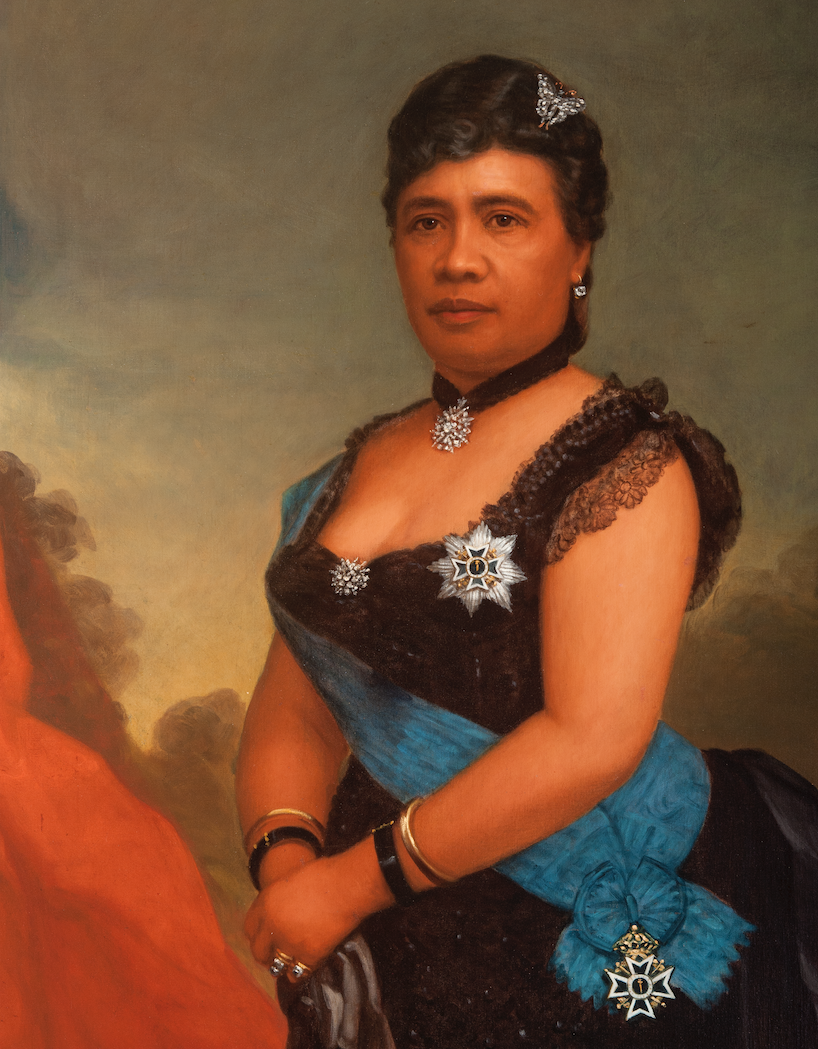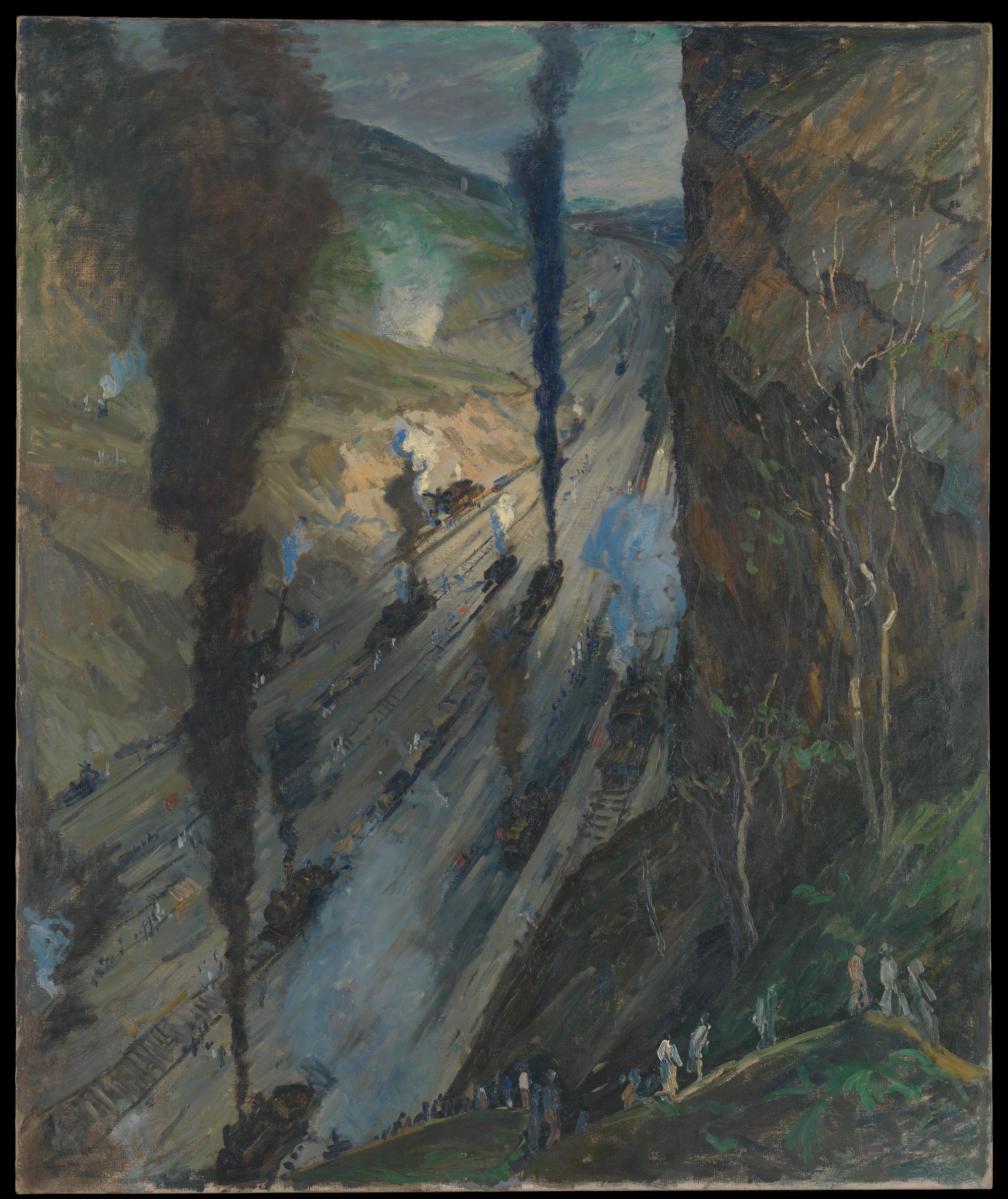
A Republic, If You Can Keep It
A new Smithsonian exhibition chronicles America’s turning point when the lines between republic and empire blurred.
Since Russia’s brutal invasion of Ukraine in February 2022, American policymakers have been puzzled by the so-called “global south.” Why have a host of countries—many of them democracies, many the partners of the United States—not joined the United States in condemning the Russian invasion? The horrors of this war are not unknown. Nor has Vladimir Putin convinced an international public that his war is just. It is not that Ukraine’s president, Volodymyr Zelenskyy, has failed to communicate his country’s cause. There is, rather, some disjunction of vision between the United States and these countries that do not see what Washington sees in the war.
American policymakers do not have to travel great distances to study this disjunction of vision. They can simply walk over to the Smithsonian’s National Portrait Gallery, where a new exhibition recently opened, titled “1898: U.S. Imperial Visions and Revisions.” It is a brilliantly curated, vividly presented excursion into an obscure swath of history–obscure to many in the United States at least. The exhibition covers a turning point: the moment the United States emerged onto the international stage and the lines between republic and empire blurred. “1898” is not a didactic exhibition. Instead, it presents problems and paradoxes from a hundred and twenty-five years ago that have considerable purchase on the present moment.
In 1898, the United States went to war against the Spanish Empire, a function of its having assembled a navy several decades earlier, of its sense that Spain was an illegitimate power in Cuba (and elsewhere), and of its eagerness to join the ranks of the great European powers. Though the war began in Cuba, it quickly took on global proportions. By the time the Treaty of Paris was signed in 1898, the treaty that ended the war, the United States had acquired dominion over Cuba, Hawaii, Puerto Rico, Guam, and the Philippines. Almost overnight the United States became a Pacific power, and simultaneously, it confronted a political dilemma. To retain these territories, which were not contiguous with the United States, it felt compelled to govern them as colonies.
“1898” captures in object and image the immense changes that occurred in this year. Vast populations found themselves tethered to the United States—in some cases willingly; in many cases unwillingly. Multiple conflicts with the Spanish Empire had been wars of national liberation. They did not conclude with national liberation, however, though both Cuba and the Philippines would eventually break away from the United States. The United States took on a new position, one that presidents William McKinley and Teddy Roosevelt celebrated but that W.E.B. DuBois, Mark Twain, Jane Addams and others lamented. The latter worried that by becoming an empire, the United States had lost its democratic soul.
The Smithsonian exhibition’s material on Hawaii is especially striking. Among many remarkable photographs, drawings and paintings, one in particular stands out. It is William F. Cogswell’s 1892 portrait of Queen Lili’uokalani, the last monarch of the Hawaiian Kingdom, who ruled until 1893. Cogswell’s portrait expresses her royal stature and proud bearing, her gaze trained directly at the painting’s viewer. Six years after this portrait was painted, Hawaii became the “Territory of Hawaii” after a contested annexation by the United States. Of all the islands and territories detailed in “1898,” Hawaii is the only one to have become a state, which it did in 1959.

The exhibition concludes with Jonas Lie’s 1913 painting, “The Conquerors: Culebra Cut, Panama Canal.” In dark swirls of color, it depicts the industrial efforts to construct the Panama Canal, which the United States oversaw between 1904 and 1914. This wonderfully agitated painting points the viewer in the direction of geopolitics. Having become a Pacific power in 1898, the United States needed to facilitate travel and commerce between the Atlantic and Pacific Oceans, a literal pathway to global power. The exhibition’s explication of this evolution is detailed and rich.
The “1898” exhibition’s deeper contribution is to put a human face on geopolitics. The revelations behind these faces, whether of Queen Lili-uokalani or of President McKinley, cannot be synthesized into any simple conclusion. What happened in 1898 was a gathering of human contradictions: of some Americans not comprehending the power their country had come to wield; of populations seeking liberty both with and against the forward thrust of American foreign policy; of dominion extended without the full rights of citizenship; and of American presidents and military leaders exerting their will on the world only to find that this same world was exerting its will on the United States, globalizing a country that before 1898 had been more inwardly focused.
Hawaii’s annexation and then incorporation into the United States bears an uncomfortable resemblance to Russia’s annexation of Crimea and its recent effort to incorporate four administrative regions of Ukraine into the Russian Federation. The analogy has its imperfections of course, and Hawaii in 1898 was vastly different from Ukraine in 2014, when Russia enacted its first illegal annexation. But the analogy deserves consideration. Russia has justified its annexations and invasions of Ukraine in part by claiming that Ukraine is in its sphere of influence. According to the “1898” exhibition, the territorial acquisitions of the United States in 1898 followed from the 1823 Monroe Doctrine, which designated the Western Hemisphere an American sphere of influence.
The “global south” of 2023 retains its centuries-old memories of U.S. imperialism in ways that shape perceptions of American power. American foreign policy in Europe is often American foreign policy at its most heroic, from the liberation of Europe from fascism to the miracle of 1989, when many countries were released from Soviet oppression—with the help and encouragement of the United States. American foreign policy outside of Europe, however, can be unheroic indeed. Time and again, the United States has violated the sovereignty of countries and the rights of populations in the “global south.”
The dichotomy between American foreign policy in Europe and American foreign policy outside of Europe does much to illuminate the present moment. The United States, having come to Ukraine’s support, centers an immensely successful transatlantic relationship. The NATO alliance reflects the popularity of the United States in Europe: Finland has just joined it; Sweden may join it soon; and Ukraine very much wants to join NATO. Looked at through another lens, the United States is criticizing Russia for behaviors and attitudes that are less foreign to American history than many Americans would like to believe. The West’s challenge in the “global south” is not just to contend with Europe’s record of imperialism. It is to acknowledge the imperial visions and revisions of American history as well.

To bridge the U.S. approach to Ukraine with approaches in the “global south,” American policy makers are already engaging in dialogue with these countries. (India’s President Modi was just on a state visit to Washington.) Such dialogue will elucidate what non-European countries view as their interests; it will elucidate their reading of events; it will elucidate the language in which countries other than the United States understand the war in Ukraine and decide what their own response can or ought to be. In turn, the United States is working its way toward more common ground with South Africa, Brazil, India, and other countries that have responded to the war either in a spirit of neutrality or that have blamed the war on the United States and its NATO allies. This is the work of diplomacy.
An additional step would be to reflect more comprehensively on the history of American foreign policy. Dean Acheson may have been “present at the creation” in 1945, when the United States achieved definitive superpower status, helping then to create the United Nations and many other multi-lateral institutions; but 1898 was also a year of creation, and the checkered history encapsulated in that year is not less consequential than the history that brought us the Marshall Plan and the NATO alliance. A reckoning with this “other” history furnishes many insights into the workings of American power. Not less importantly, it furnishes many insights into the international valence of American power, and not just in the “global south.”
The United States had a difficult birth as a global power, something that can be an asset to American policymakers. It is by no means an invitation to cynicism—that is, to the argument that because the United States signed onto the Monroe Doctrine in 1823 Russia should have carte blanche to pursue a sphere of influence in Ukraine. The “1898” exhibition is a meditation on the burden of power, especially for a country like the United States that cannot be an empire and at the same time be true to its Constitution. Countless forces are always militating against a foreign policy based on democratic ideals, both from within and without the republic. But to carry a burden gracefully one must first know what the burden is, and for this there is no better introduction than the “1898” exhibition at the National Portrait Gallery.
Michael Kimmage is a professor of history at the Catholic University of America. He is a non-resident senior associate at CSIS. His next book, Collision: The War in Ukraine and the Origins of the New Global Instability, is due out with Oxford University Press in spring 2024.
"1898: U.S. Imperial Visions and Revisions" is on view at the National Portrait Gallery in Washington, D.C., through February 25, 2024.
Top image: "Batalla en la Bahia de Manilla, 1 de Mayo del 1898 (Battle of Manilla Bay May 1, 1898)," Ildefonso Sanz y Domenech, oil on canvas, 1899. (The Army and Navy Club Library Trust and National Portrait Gallery)
American Purpose newsletters
Sign up to get our essays and updates—you pick which ones—right in your inbox.
Subscribe






